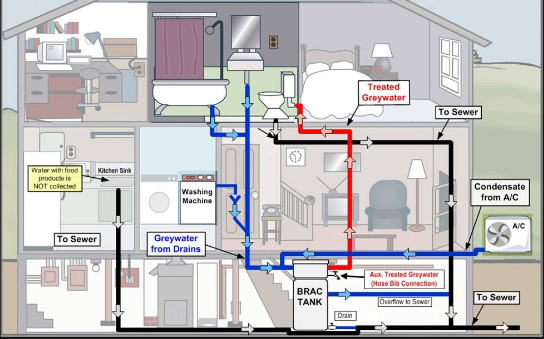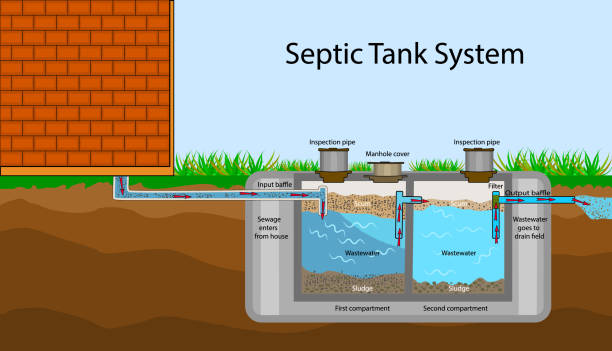Understanding The Layout of Your Home's Plumbing System
Understanding The Layout of Your Home's Plumbing System
Blog Article
How do you feel in regards to The Inner Workings of Your Home's Plumbing?

Understanding how your home's plumbing system functions is essential for every homeowner. From delivering tidy water for alcohol consumption, cooking, and bathing to safely removing wastewater, a well-maintained pipes system is critical for your family members's wellness and convenience. In this comprehensive guide, we'll explore the intricate network that composes your home's pipes and deal pointers on maintenance, upgrades, and dealing with common concerns.
Intro
Your home's pipes system is greater than just a network of pipelines; it's an intricate system that guarantees you have access to tidy water and effective wastewater removal. Recognizing its elements and how they work together can aid you stop pricey repair services and guarantee everything runs efficiently.
Fundamental Elements of a Pipes System
Pipes and Tubing
At the heart of your pipes system are the pipes and tubes that bring water throughout your home. These can be constructed from different products such as copper, PVC, or PEX, each with its advantages in terms of longevity and cost-effectiveness.
Fixtures: Sinks, Toilets, Showers, etc.
Fixtures like sinks, commodes, showers, and bathtubs are where water is utilized in your house. Understanding exactly how these fixtures link to the plumbing system aids in identifying problems and planning upgrades.
Shutoffs and Shut-off Factors
Valves regulate the circulation of water in your plumbing system. Shut-off valves are essential throughout emergencies or when you require to make repairs, permitting you to isolate parts of the system without disrupting water circulation to the entire home.
Water Supply System
Key Water Line
The main water line links your home to the community water or a private well. It's where water enters your home and is dispersed to numerous fixtures.
Water Meter and Stress Regulatory Authority
The water meter procedures your water usage, while a stress regulatory authority guarantees that water moves at a safe stress throughout your home's plumbing system, avoiding damages to pipelines and fixtures.
Cold Water vs. Warm water Lines
Understanding the distinction in between cold water lines, which provide water straight from the primary, and hot water lines, which bring warmed water from the water heater, helps in fixing and planning for upgrades.
Drainage System
Drain Pipes Pipeline and Traps
Drain pipelines carry wastewater away from sinks, showers, and toilets to the drain or septic system. Traps prevent drain gases from entering your home and additionally catch debris that could trigger blockages.
Ventilation Pipes
Ventilation pipes enable air right into the water drainage system, preventing suction that can reduce drainage and cause traps to empty. Appropriate air flow is vital for preserving the honesty of your pipes system.
Relevance of Proper Drainage
Guaranteeing correct water drainage prevents backups and water damages. Routinely cleaning drains and preserving traps can stop expensive repair services and expand the life of your pipes system.
Water Furnace
Kinds Of Hot Water Heater
Hot water heater can be tankless or conventional tank-style. Tankless heating systems warm water as needed, while storage tanks store warmed water for prompt usage.
Exactly How Water Heaters Link to the Plumbing System
Understanding how hot water heater link to both the cold water supply and hot water distribution lines helps in diagnosing concerns like not enough warm water or leaks.
Maintenance Tips for Water Heaters
On a regular basis purging your hot water heater to remove sediment, checking the temperature settings, and inspecting for leakages can expand its lifespan and boost power efficiency.
Common Pipes Problems
Leaks and Their Reasons
Leaks can occur due to maturing pipes, loose fittings, or high water pressure. Resolving leakages promptly protects against water damage and mold and mildew development.
Clogs and Obstructions
Clogs in drains pipes and bathrooms are frequently caused by purging non-flushable items or a buildup of oil and hair. Utilizing drainpipe screens and being mindful of what decreases your drains can prevent blockages.
Signs of Pipes Problems to Look For
Low water stress, sluggish drains pipes, foul odors, or uncommonly high water costs are indications of possible plumbing issues that ought to be addressed immediately.
Pipes Maintenance Tips
Normal Evaluations and Checks
Set up annual pipes inspections to capture issues early. Search for indicators of leaks, deterioration, or mineral accumulation in taps and showerheads.
DIY Maintenance Tasks
Straightforward tasks like cleaning tap aerators, looking for toilet leaks making use of dye tablets, or shielding exposed pipelines in cool climates can stop significant plumbing issues.
When to Call an Expert Plumbing
Know when a pipes concern requires expert expertise. Attempting complicated repairs without appropriate understanding can bring about more damage and higher fixing costs.
Updating Your Plumbing System
Reasons for Upgrading
Upgrading to water-efficient fixtures or replacing old pipelines can boost water quality, decrease water expenses, and boost the worth of your home.
Modern Pipes Technologies and Their Advantages
Discover technologies like wise leakage detectors, water-saving bathrooms, and energy-efficient hot water heater that can conserve money and decrease environmental effect.
Expense Considerations and ROI
Determine the in advance expenses versus lasting savings when thinking about pipes upgrades. Many upgrades pay for themselves through decreased utility expenses and fewer repair work.
Environmental Influence and Preservation
Water-Saving Components and Home Appliances
Mounting low-flow taps, showerheads, and bathrooms can substantially lower water use without giving up efficiency.
Tips for Minimizing Water Use
Basic practices like dealing with leakages immediately, taking shorter showers, and running full lots of washing and meals can save water and reduced your utility bills.
Eco-Friendly Pipes Options
Take into consideration lasting plumbing materials like bamboo for floor covering, which is durable and green, or recycled glass for kitchen counters.
Emergency situation Preparedness
Steps to Take During a Pipes Emergency situation
Know where your shut-off valves are located and just how to shut off the supply of water in case of a ruptured pipe or significant leak.
Relevance of Having Emergency Situation Contacts Helpful
Keep call information for local plumbing professionals or emergency situation services conveniently offered for fast action throughout a plumbing situation.
Do It Yourself Emergency Fixes (When Applicable).
Short-term fixes like making use of duct tape to spot a leaking pipeline or placing a pail under a leaking tap can reduce damages up until a professional plumber shows up.
Conclusion.
Comprehending the anatomy of your home's pipes system empowers you to preserve it effectively, conserving money and time on repair services. By complying with regular maintenance regimens and staying notified about contemporary pipes innovations, you can ensure your pipes system runs effectively for several years to come.
HOW YOUR PLUMBING SYSTEM WORKS
Which Pipes Do What?
Blue lines = fresh water supply entering the building
Red lines = hot water supply entering the building
Grey lines = pipes carrying waste away from the building and venting pipes carrying gases away from the building (through the roof)
YOUR MAIN PLUMBING SYSTEMS
There are two main plumbing systems that support your home s basic plumbing needs one that brings clean water into your home, and one that sends dirty water away from your home. Connected to the toilet, bath, shower, and other faucets in your home, these two systems keep your water flowing in the right directions.
ACCESSING FRESH WATER
Fresh and clean water is brought into your home through the main water supply line . Filtered through one pipe, this water is pressured to flow into the various fixtures in your home at any given time.
This water can be sourced from a well located on your property, a pond or river (mostly cottages), or, as in most cases, from the city s municipal water treatment centre. However, it is important to note that water that is untreated, such as the water siphoned from ponds or rivers, may not be safe to drink. Personal water supplies always need to be treated for hardness and contaminants before consumed.
MUNICIPAL WATER SUPPLIES
Improve taste and odour
Remove sediment
Eliminate hardness
Reduce chlorine
COLD WATER SUPPLY VS. HOT WATER SUPPLY
Cold water flows into your home or building through the service line, which then distributes hot or cold water to your fixtures. This line is most commonly run through a central column that runs floor to floor. Hot water runs in short and straight pipes as the longer the pipeline, the more heat that will be lost in the transfer. Having shorter pipes also allows residents to access hot water more quickly.
WASTE WATER SYSTEM
Your wastewater system is divided into two parts pipes that send wastewater away from your home and venting pipes that send sewer gas away from your home. Sewage water travels through pipes that flush the water and waste towards local sewers that are operated and managed by your city or town. Most sewer systems rely on gravity to move the wastewater to where it needs to go.
The further away from your toilet or sink, the larger wastewater pipes become. This allows for waste to be disposed of from various parts of your home or business at once without pipe blockages. The angle and flow of these pipes are also essential for keeping your waste pipes clear of build up.
https://harrisplumbing.ca/how-your-home-plumbing-system-works/

HOW YOUR PLUMBING SYSTEM WORKS
Which Pipes Do What?
YOUR MAIN PLUMBING SYSTEMS
There are two main plumbing systems that support your home s basic plumbing needs one that brings clean water into your home, and one that sends dirty water away from your home. Connected to the toilet, bath, shower, and other faucets in your home, these two systems keep your water flowing in the right directions.
ACCESSING FRESH WATER
Fresh and clean water is brought into your home through the main water supply line . Filtered through one pipe, this water is pressured to flow into the various fixtures in your home at any given time.
This water can be sourced from a well located on your property, a pond or river (mostly cottages), or, as in most cases, from the city s municipal water treatment centre. However, it is important to note that water that is untreated, such as the water siphoned from ponds or rivers, may not be safe to drink. Personal water supplies always need to be treated for hardness and contaminants before consumed.
MUNICIPAL WATER SUPPLIES
COLD WATER SUPPLY VS. HOT WATER SUPPLY
Cold water flows into your home or building through the service line, which then distributes hot or cold water to your fixtures. This line is most commonly run through a central column that runs floor to floor. Hot water runs in short and straight pipes as the longer the pipeline, the more heat that will be lost in the transfer. Having shorter pipes also allows residents to access hot water more quickly.
WASTE WATER SYSTEM
Your wastewater system is divided into two parts pipes that send wastewater away from your home and venting pipes that send sewer gas away from your home. Sewage water travels through pipes that flush the water and waste towards local sewers that are operated and managed by your city or town. Most sewer systems rely on gravity to move the wastewater to where it needs to go.
The further away from your toilet or sink, the larger wastewater pipes become. This allows for waste to be disposed of from various parts of your home or business at once without pipe blockages. The angle and flow of these pipes are also essential for keeping your waste pipes clear of build up.
https://harrisplumbing.ca/how-your-home-plumbing-system-works/
Hopefully you enjoyed reading our section on The Inner Workings of Your Home's Plumbing. Thank you so much for taking the time to read our post. I beg you take the opportunity to share this entry if you enjoyed it. Thank you for going through it.
Book Appointment Report this page